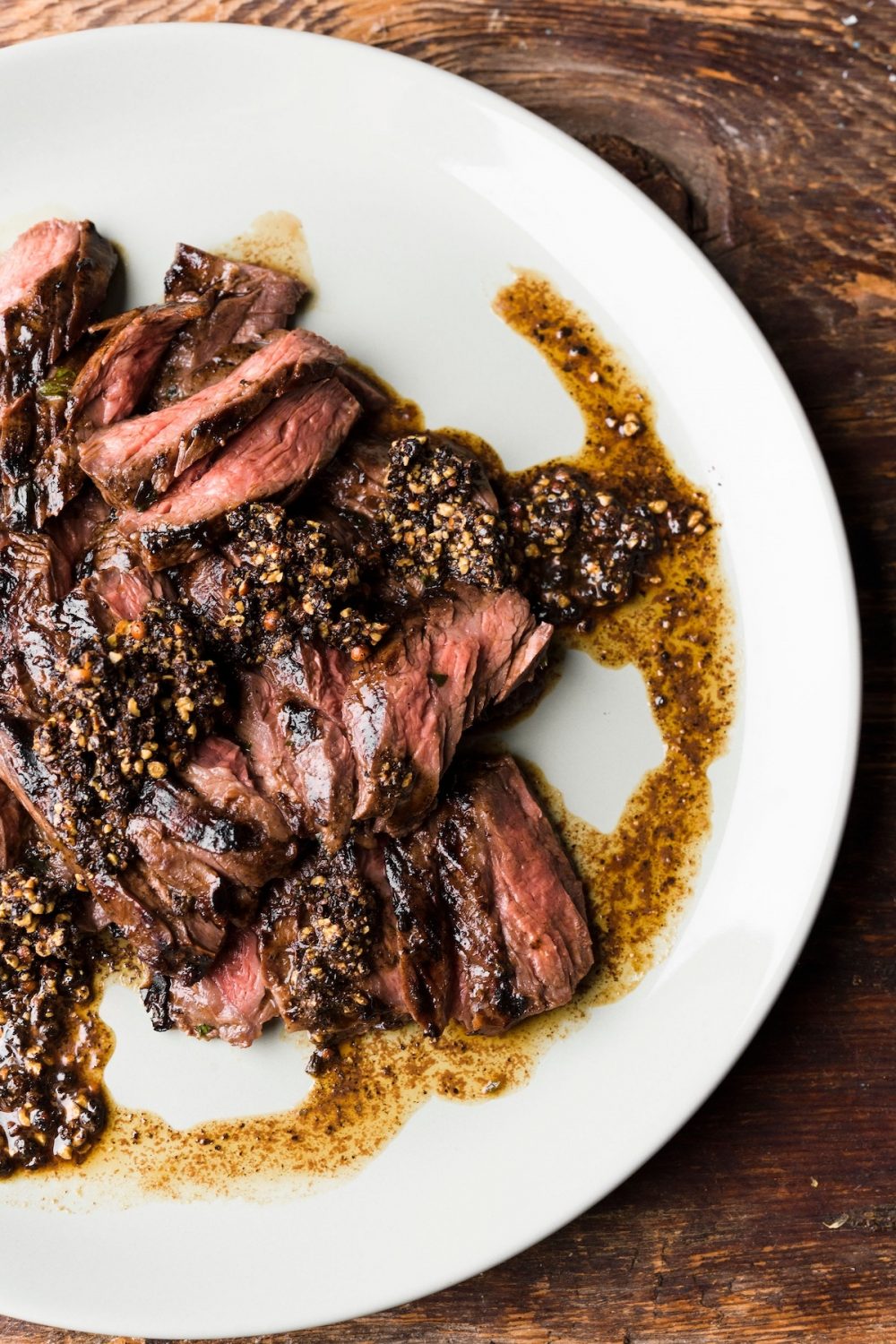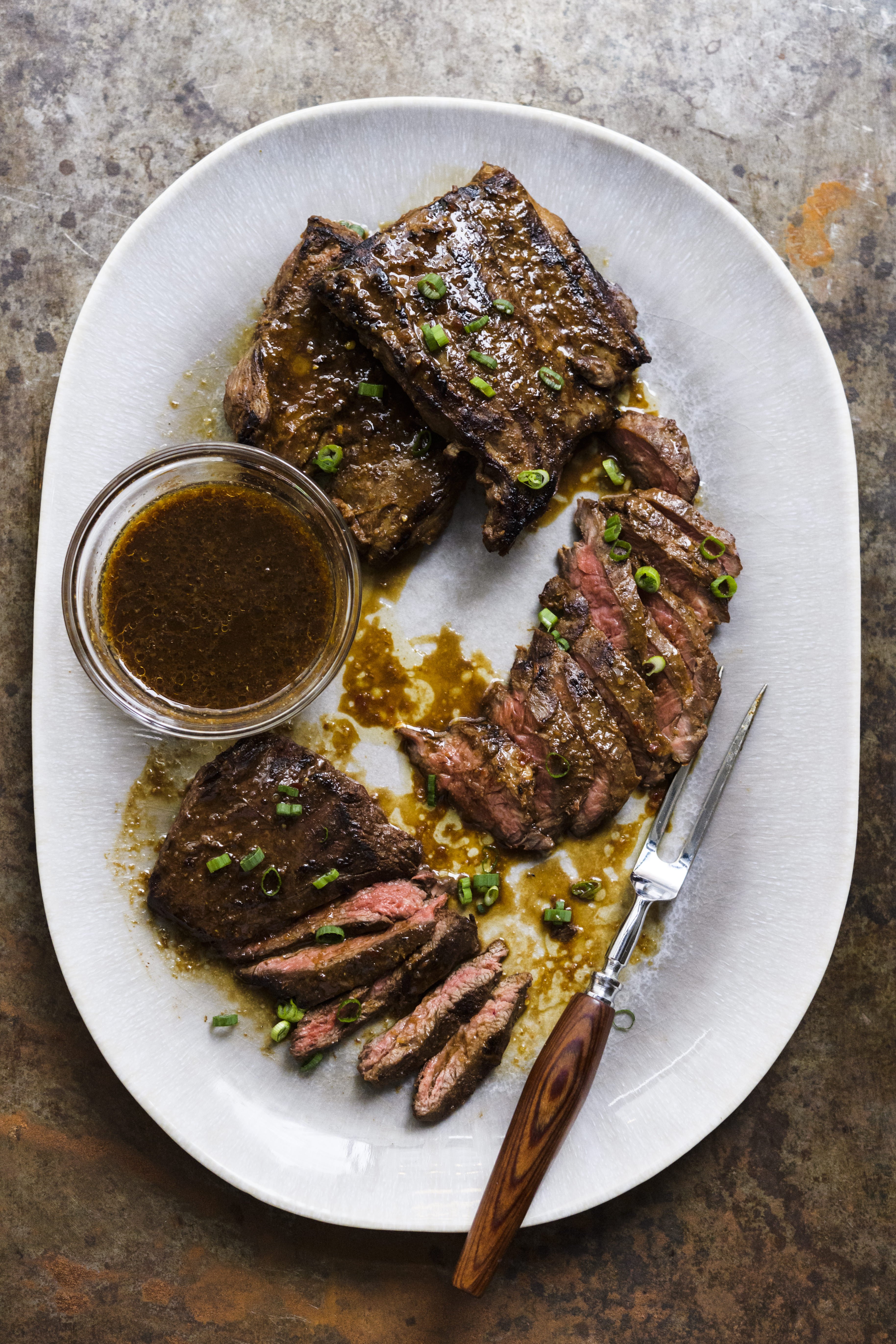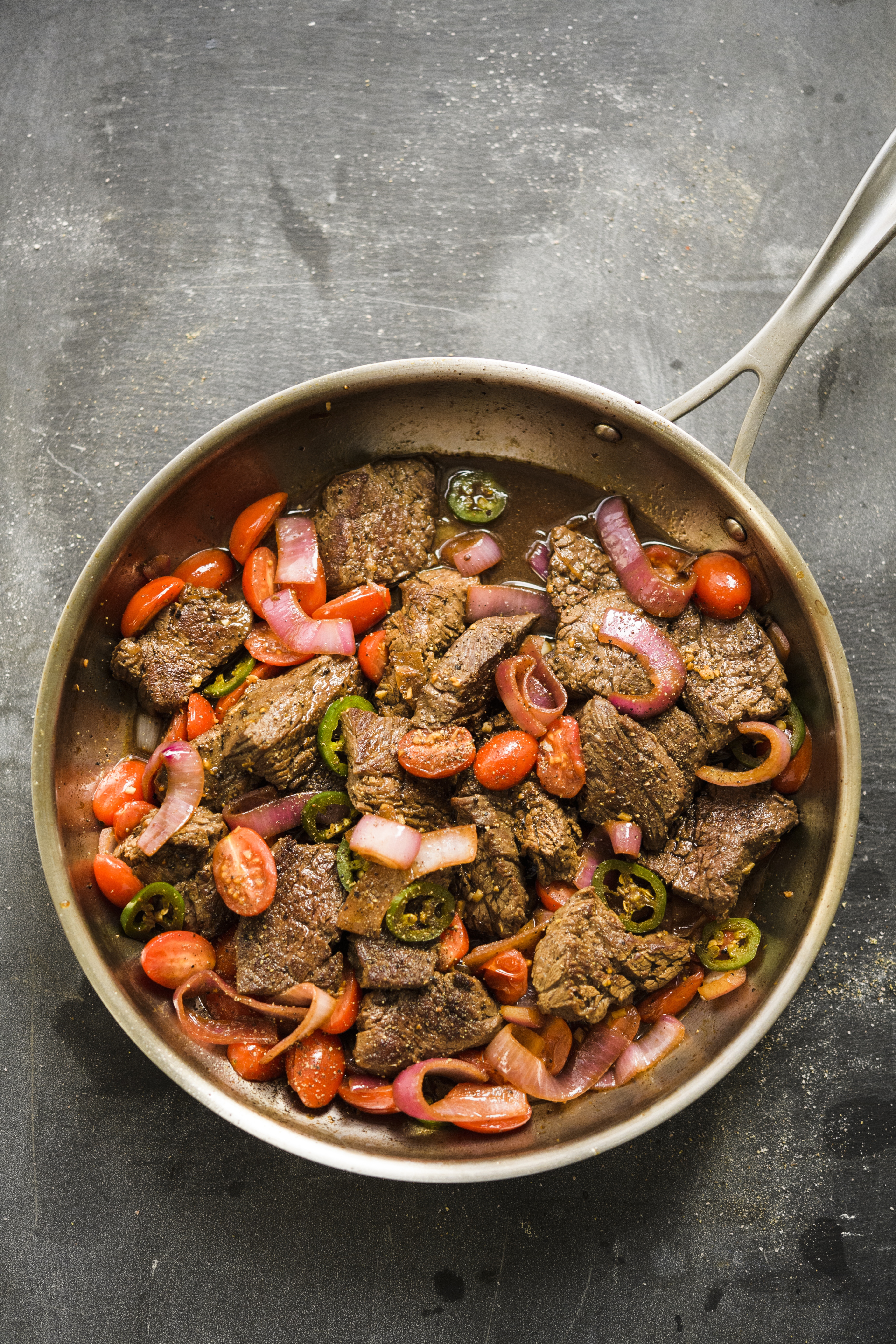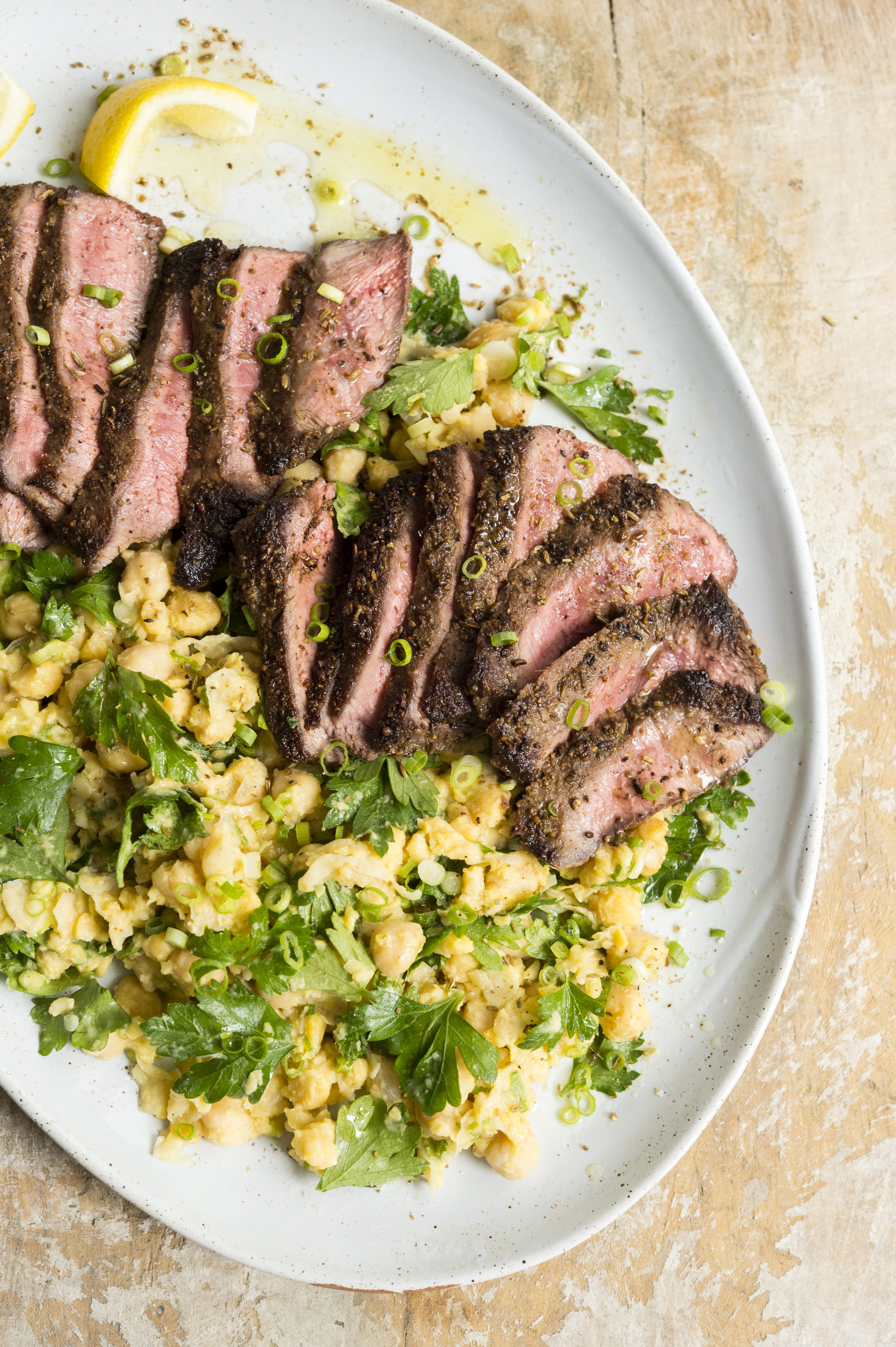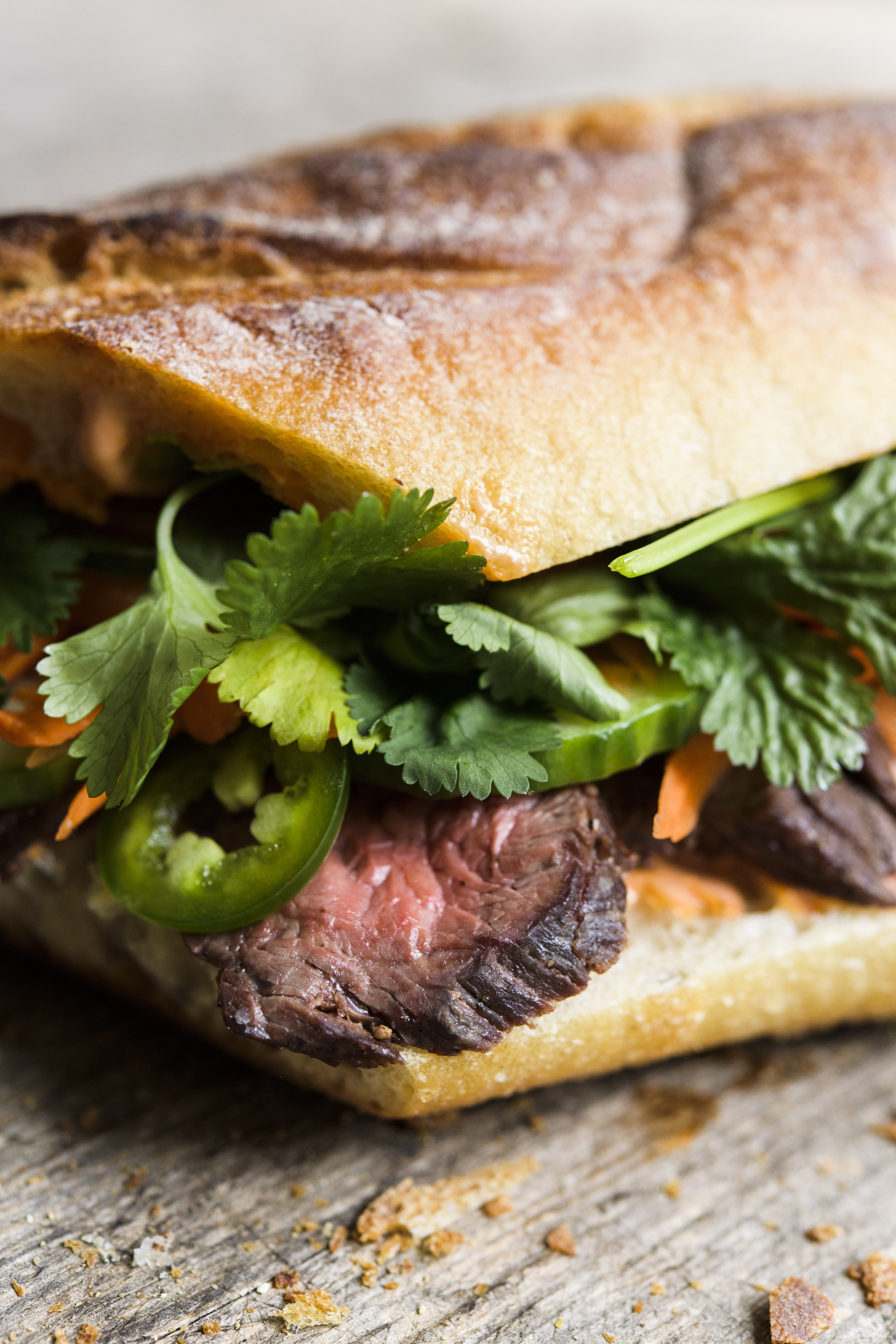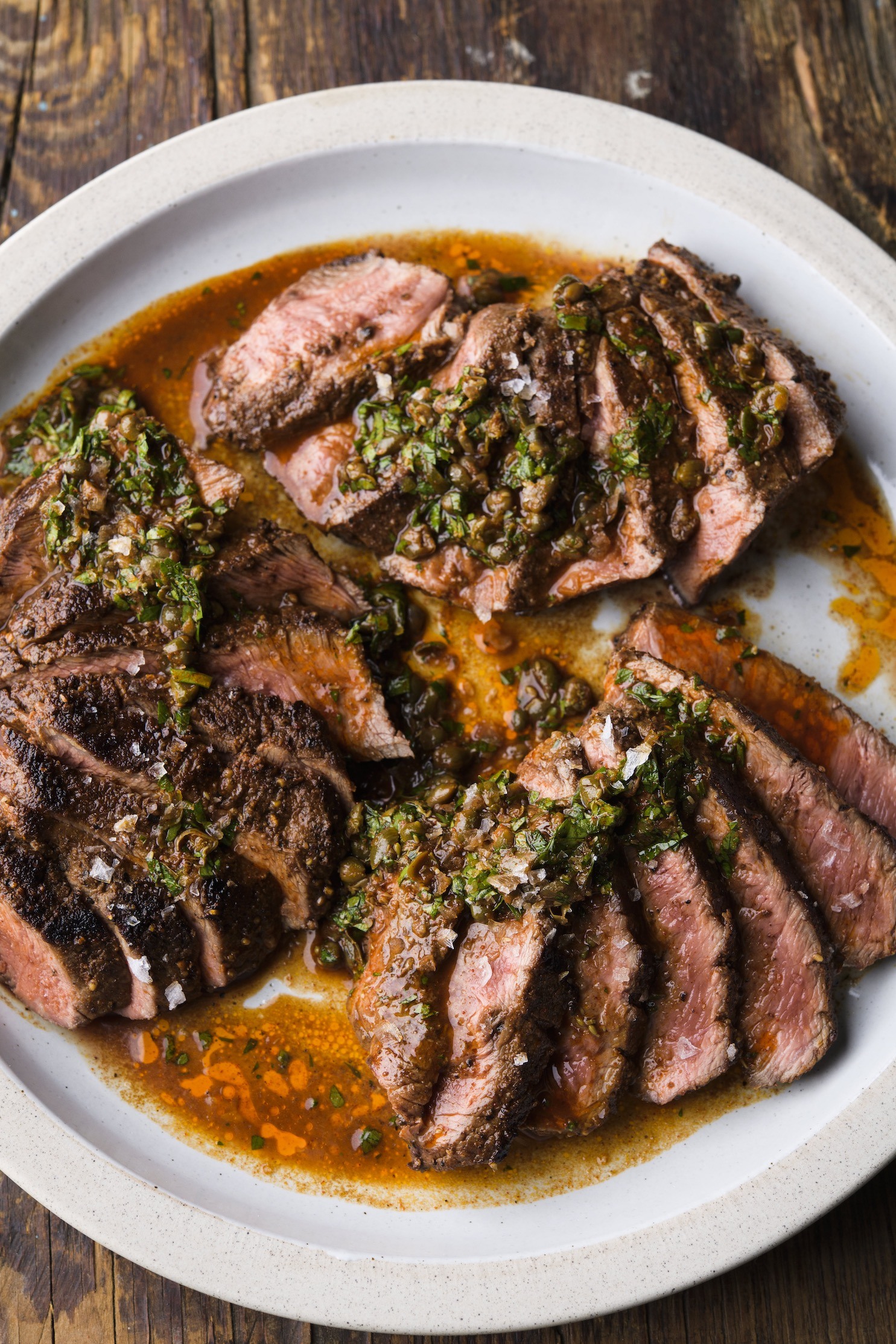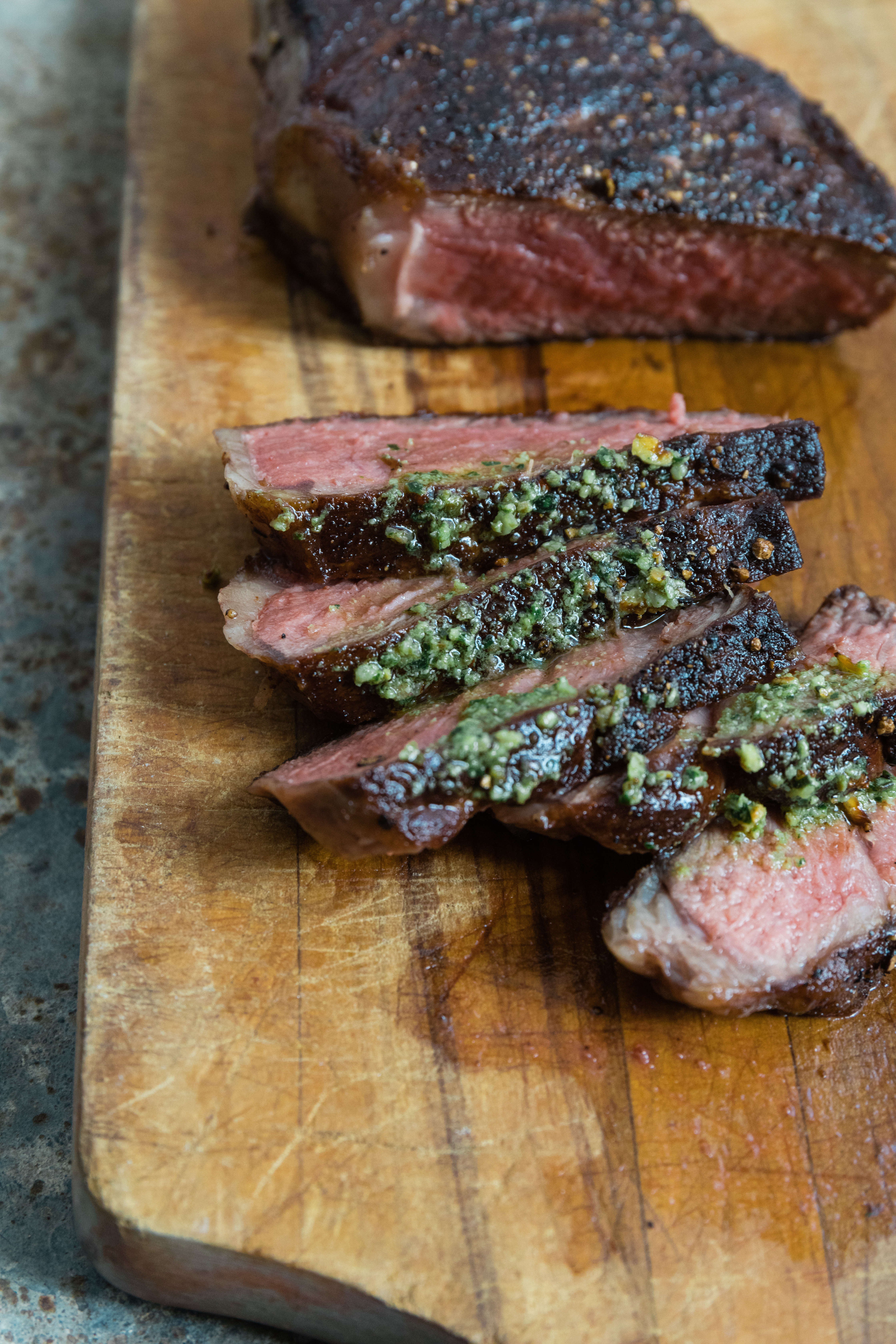Whether you’re pan-searing skirt steak or grilling sirloin tips, you don’t want to screw up your steak dinner with some faulty advice. With all the misinformation—and strong opinions—about steak out there, it’s easy to get tripped up. So we spoke with grilling expert and cookbook author Meathead Goldwyn to clear the air on a handful of common myths. Thanks, Meathead, for the steak tips (pun intended.)
The Myth: Rest Your Steak to Let the Juices Redistribute
The Meat of the Matter: “It’s time to stop crying over spilled juices,” Meathead says. “People tell you to rest meat so the juices distribute. But what difference does it make where the juices are? It makes no difference.” The theory is that the drier, hotter meat on the outside of the cut will reabsorb some of the juices from the less-cooked interior so that when you slice into the middle, less juice spills out. But Meathead reminds us how people actually eat a steak: in bite-sized pieces, one at a time, most likely mopping up any spilled juices anyway. Moreover, the goal of a properly cooked steak is a crispy crust and tender interior; dry meat (or the bogus theory of rehydrating it) shouldn’t factor in anywhere.
Though minimal liquid might escape if you slice a large cut down the middle right after cooking, “juiciness” depends on a lot more than a little liquid loss. Worry less about a little bit of liquid that should be mopped up anyway, and more about what’s gained by serving a hot steak right away, Meathead argues. Your steak won’t risk getting cold, for one. It won’t suffer from carryover cooking, which could dry it out and make it taste less juicy. Warm fat yields a better mouthfeel than the waxy texture of cold fat. And finally, you’ll retain the salty, crispy exterior that makes your mouth water, as opposed to risking a crust that turns soggy during resting.
The Myth: The Red Juices in a Steak Are Blood.
The Meat of the Matter: Stop calling rare meat “bloody.” The juice spilling—or not spilling—out of meat is water filled with myoglobin, the protein that transports oxygen through muscles. Older or more active animals might have meat with more myoglobin, and darker meat and juices. As Meathead has said on his website, "Every time someone calls it blood, a teenager somewhere becomes a vegan."
The Myth: You Can Tell If a Steak Is Done By Poking It
The Meat of the Matter: Touch your thumb to your middle finger, then feel the fleshy pad just under your thumb. That’s what a medium rare steak should feel like when you poke it. Now touch your thumb to your pointer finger. That’s a rare steak. And so on. This widely-touted finger test isn’t reliable, Meathead says. Hands differ, as do cuts of meat. Use a meat thermometer to determine when your steak is done. Plain and simple.
The Myth: Searing Meat Seals in Juices
The Meat of the Matter: People love this one, but there’s no science to back up this claim. Cooking leads to moisture loss no matter which way you cut it, Meathead points out. Searing does nothing to lock in juices. What searing does, however, is form a savory, brown crust that could cause your mouth to water. (Remember, “juiciness” is a complex factor, and a mouthwatering aroma and texture can contribute to the perception of a steak being “juicy,” Meathead says.)
The Myth: Cooking Time Depends on Weight
The Meat of the Matter: Once again, use your thermometer! Cook times depend on the cut of steak, the cooking method and the cooking temperature. Weight is only important as it relates to thickness, or how long it takes for the heat to reach the interior of the cut.
The Myth: Bring a Steak to Room Temp Before Cooking.
The Meat of the Matter: The theory goes that a colder steak will take longer to cook to the optimal temperature, so bringing it to room temperature first will help speed cook time along. However, meat, especially a thick cut, takes a really long time to come to room temperature, which makes contamination a risk. (Though less likely in steak than ground beef or chicken, contamination is still a concern.) Meathead also says that smoke adheres better to cold surfaces, producing more flavor. So you’re actually better off cooking steak straight from the refrigerator or freezer, Meathead says.
For more myth-busting from Meathead, check out this list of BBQ myths to avoid and listen to him on Milk Street Radio.
